

Table of contents
- Coffee grounds in the home garden
- berry bushes
- blueberries
- blackberries
- currants
- vegetable plants
- pumpkin
- cucumbers
- tomatoes
- zucchini
- ornamental plants
- angel trumpet
- geraniums
- hydrangeas
- Rhododendrons
- Conclusion
Anyone looking for a particularly environmentally friendly and inexpensive method of fertilizing their plants is well advised to use coffee grounds. Because this supposed waste product is free of pollutants and can be reused in many ways. Hobby gardeners particularly like to use the coffee grounds as a natural fertilizer. Read here for which plants the home remedy is best suited!
Coffee grounds in the home garden
Coffee grounds contain numerous minerals, with potassium, nitrogen and phosphorus being particularly noteworthy. Plants need these substances in order to grow and thrive. In addition, earthworms are magically attracted to the coffee grounds, which in turn loosen the soil with their movements. But not only that, they also leave behind excrement, which also provides important nutrients for the plants. On top of that, coffee grounds keep a number of pests and bugs away and lower the pH of the soil. Therefore, this home remedy is particularly beneficial for plants that prefer acidic humus soil.
berry bushes
For many hobby gardeners, berry bushes are indispensable in the design of their garden. Rightly so, because the bushes are not only an eye-catcher, but also produce tasty fruits that invite you to nibble. The healthy, low-calorie berries grow best when grown in as sunny a spot as possible. Most berry bushes prefer loose, humus-rich and deep soil. The shrubs are usually fertilized in spring and autumn, with compost being used in particular. You can also fertilize these berry bushes with coffee grounds without hesitation:
blueberries

The blueberries prefer a location in full sun, which is also protected from wind and weather. They thrive best in a natural soil, such as a more acidic sandy soil. The soil should be as permeable and lime-free as possible. Regular watering is essential so that the shrub bears its black-blue, round berries from July to September. The blueberries do not tolerate waterlogging, but they need plenty of moisture. For this it is worth providing the plants with a mulch layer into which the coffee grounds are worked.
- Latin name: Vaccinium myrtillus
- Synonyms: Blueberry, blackberry, wild berry, forest berry
- Genus: Bilberries (Vaccinium)
- growth height: up to 2 meters
- growth habit: dwarf shrub
- Particularities: becomes up to 30 years old
blackberries
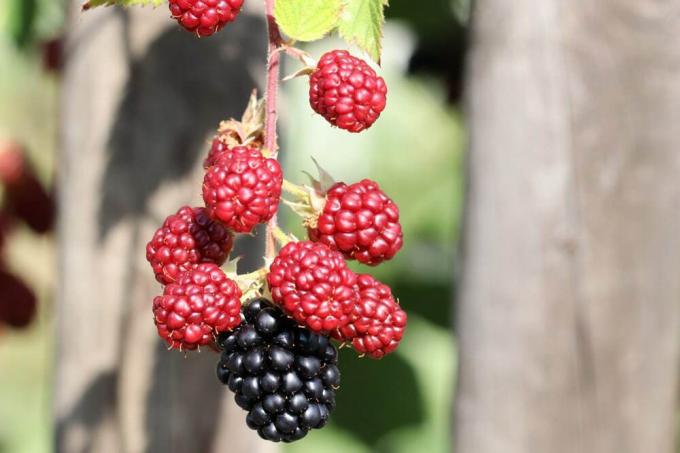
The blackberries are best planted in moist soil that is also humus-rich, well aerated and slightly acidic. When choosing a location, the shrub is not particularly demanding, because it feels comfortable in a sunny as well as in a partially shaded place. The plant is fertilized from the beginning of April, whereby it is advisable to create a layer of mulch to suppress any weeds. If the plant is properly cared for, it usually forms blue-black fruits, which look like berries but are actually aggregate drupes. In addition, the blackberry is often used as a medicinal plant for diarrhea, gingivitis or colds.
- Latin name: Rubus sectio Rubus
- Synonyms: forest berry
- Genus: Rose family (Rosaceae)
- growth height: up to 3 meters
- growth form: climbing shrub
- Particularities: is used as a medicinal plant
currants

The undemanding currants can be grown in a sunny or partially shaded place. However, the sweetness of the fruit develops better the sunnier the plant is. This berry bush prefers moist soil, but does not tolerate waterlogging. It is also important to ensure that it is rich in humus and nutrients. It is best to provide the soil with plenty of compost in spring and then mulch it. The coffee grounds can be worked into both the compost and the mulch layer.
- Latin name: Ribes
- Synonyms: Red currant, sea turkey
- Genus: Gooseberry family (Grossulariaceae)
- growth height: 1 to 1.5 meters
- growth form: shrub
- Particularities: mostly deciduous, rarely evergreen
vegetable plants
More and more hobby gardeners are using their garden to provide for themselves and to grow tasty vegetables. In particular, nature-conscious people swear by self-sufficiency, and rightly so! Because only by growing them yourself can you be sure that the plants will not come into contact with pesticides or other pollutants. The nutrient supply can be ensured with numerous organic fertilizers, whereby some types of vegetables can also be fertilized with coffee grounds without any problems.
pumpkin

If you want to grow the tasty pumpkins in your garden, you should have enough space for this. In addition, the pumpkin plants need at least six hours of sunlight per day, which is why they are preferably grown in a sunny to full sun location. The plants are watered regularly so that the soil is constantly moist. A nitrogen-rich complete fertilizer is mixed into the irrigation water weekly to provide the plants with sufficient nutrients. Alternatively, however, compost, in which the coffee grounds are incorporated, is also suitable.
- Latin name: Cucurbita
- Synonyms: melon fruit
- Genus: Pumpkin family (Cucurbitaceae)
- growth height: several meters
- growth form: low lying and herbaceous
- Particularities: requires a lot of space
cucumbers

The cucumbers prefer a location in full sun, which is also sheltered from the wind. When choosing the soil, make sure that it is humus and loose. This vegetable plant is a heavy feeder, which is why it always wants to be supplied with sufficient nutrients. Since it also has a high water requirement, it is advisable to create a mulch layer. This keeps the soil moist for longer, which in turn benefits the fruit. The cucumbers can easily be fertilized with coffee grounds, especially since these can also be incorporated into the mulch layer.
- Latin name: Cucumis sativus
- Synonyms: cumber
- Genus: Pumpkin family (Cucurbitaceae)
- growth height: up to 3 meters
- growth form: climbing or on the ground
- Particularities: the fruits are actually berries
tomatoes
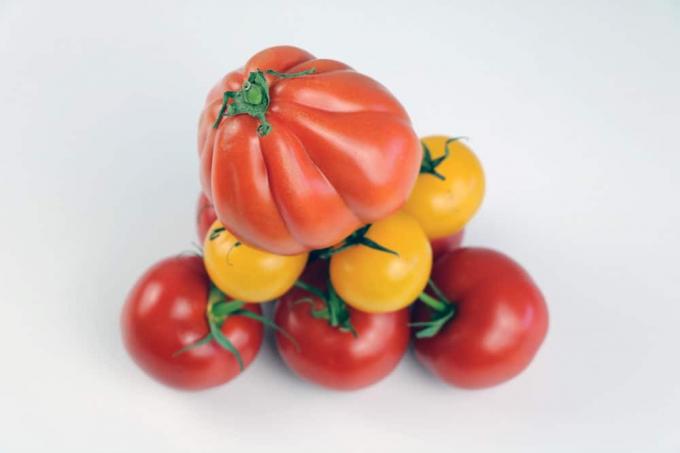
Tomatoes are one of the vegetables that benefit most from fertilizing with coffee grounds. Because they are also heavy consumers and have to be constantly supplied with nutrients. They also need a lot of water all the time, which is why mulching the tomato plants is also advisable. To ensure a bountiful harvest, the nightshade plant should be grown in a warm and sunny location.
- Latin name: Solanum lycopersicum
- Synonyms: Candy apples, paradise apples, tomatoes
- Genus: Solanaceae (Solanaceae)
- growth height: 30-400cm
- growth form: depending on variety
- Particularities: Botanically, the fruits are berries
zucchini

The Mediterranean vegetable can be easily grown in the home garden, as long as it is provided with a sunny and warm place. The zucchini also need enough space, which should also be protected. The soil should be loose and well-drained as well as humic and nutrient-rich. To protect the plants from weeds, it is worth creating a layer of mulch. This also has the advantage that the soil stays moist longer.
- Latin name: Cucurbita pepo
- Synonyms: zucchini
- Genus: Pumpkin family (Cucurbitaceae)
- growth height: 1 to 1.5 meters
- growth form: herbaceous, creeping
- Particularities: Flowers are edible
ornamental plants
For most hobby gardeners, the cultivation of ornamental plants in the home garden has become indispensable. The selection of decorative plants is enormous and offers the hobby gardener the opportunity to design the garden according to their own wishes. Many of these ornamental plants can also be supplied with nutrients inexpensively by fertilizing them with coffee grounds. In particular, the following plants benefit from the home remedy:
angel trumpet

The angel's trumpet impresses with its yellow flowers, which can be both fragrant and unpleasantly smelling. They prefer a sheltered spot and should not be exposed to direct midday sun. Due to their large leaves, they have a correspondingly high water requirement, which is why they should be watered daily, especially in summer. The angel's trumpet is also considered a heavy feeder and is often attacked by snails. That is why the decorative plant benefits even more from the coffee grounds. Because on the one hand it is supplied with sufficient nutrients and on the other hand the household remedy keeps the snails away.
- Latin name: Brugmansia
- Synonyms: Evil Eagle Tree, Burundanga
- Genus: Nightshade family (Solanaceae)
- growth height: 2 to meters
- growth form: shrubs or trees
- Special features: all parts of the plant are highly toxic
geraniums

The geraniums, whose correct name is pelargonium, come from South Africa and accordingly prefer a full sun to partially shaded location. They also have a high water requirement, which is why the soil should always be evenly moist. A permeable and nutrient-rich soil is also ideal for this heavy feeder. It is best to work a long-term fertilizer into the soil directly when planting. The geraniums are fertilized weekly or fortnightly by mixing a liquid fertilizer into the irrigation water. If this ornamental plant is properly cared for, it adorns the garden with its magnificent flowers. These can be pink, white, red or violet in color and have patterns such as stripes or spots.
- Latin name: pelargonium
- Synonyms: cranesbill
- Genus: cranesbill family
- growth height: up to 50 centimeters
- growth form: bushy
- Particularities: blooms permanently
hydrangeas
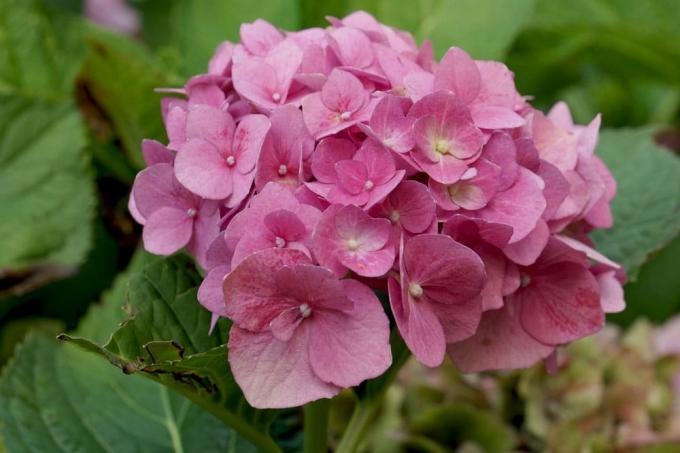
The natural stock of the hydrangea is mainly found in the temperate to warm temperate regions of East Asia. In domestic gardens, it prefers a semi-shady to shady location that is sheltered from the wind. The optimal soil is rich in humus and has a pH between 5 and 6. The hydrangea also has a high nutrient requirement and should therefore be supplied with sufficient nutrients. When watering, make sure that this ornamental plant prefers rainwater and does not tolerate waterlogging. With proper care, the hydrangea forms numerous flowers from July to August, which can be white, blue, red, green or violet in color.
- Latin name: Hydrangea
- Genus: Hydrangea family (Hydrangeaceae)
- growth height: up to 2 meters
- growth form: subshrub or shrub
- Particularities: pink peasant hydrangeas can change flower color to blue
Rhododendrons
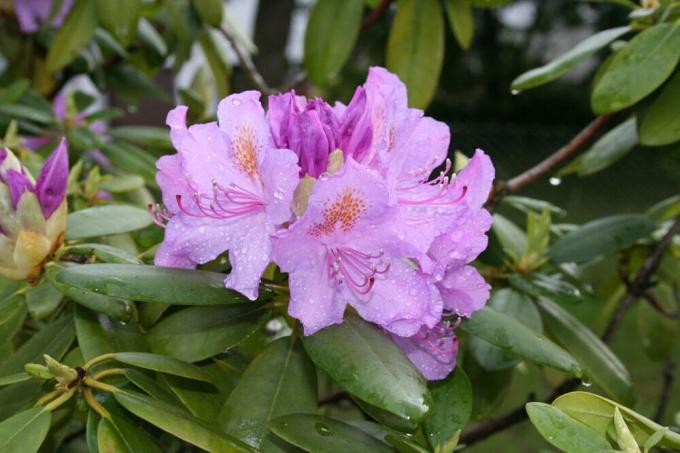
The rhododendrons are particularly decorative ornamental plants and appear like gigantic rose bushes. Around 1000 different species of rhododendrons are known worldwide, some of which can grow to be several meters high. In domestic gardens, however, mostly low-growing species are preferred. The rhododendrons are best planted in loose, humus-rich and acidic soil. When choosing a location, make sure that the plant is not exposed to direct sunlight. In addition, the rhododendrons have a high moisture requirement, which is why they should be watered regularly, especially in dry periods.
- Latin name: rhododendron
- Synonyms: Alpine rose, rose tree
- Genus: Heather family (Ericaceae)
- growth height: up to several meters
- growth form: mostly small flowering shrubs
- Particularities: some species are trees
Storage & Shelf Life
It is best to dry the coffee grounds and mix them underground. The dry coffee grounds can be stored in a dry, cool and dark place almost indefinitely.
Conclusion
Coffee grounds are an inexpensive and environmentally friendly fertilizer that is suitable for fertilizing numerous plants. Whether berry bushes, crops or ornamental plants - many plants in the home gardens benefit from the ingredients of the coffee grounds. In addition, the household remedy attracts useful earthworms and at the same time keeps pests and vermin away.
 garden editorial
garden editorial I write about everything that interests me in my garden.
Learn more about floor care

Digging up the garden: 13 tips for lawns and beds
Whether it makes sense to dig up beds or lawns is discussed in different ways. Once you have decided on this measure, our tips will help you to organize work in the garden effectively.

Pine bark: suitable for which plants?
Pine bark is a type of mulch that is gaining popularity among many garden owners due to its color and properties. Before purchasing, the question often arises as to which plants the bark mulch is suitable for. This question is justified because of the origin of the pine.

Which soil to choose for elephant foot?
The right substrate is crucial for the elephant's foot and should therefore be chosen well. Read here which soil is best suited for the Beaucarnea recurvata!

Expanded clay as a water reservoir: The alternative to earth?
Expanded clay is known to many as a substrate for hydroponics or as drainage in pots. Due to its properties, the clay granulate is suitable as a substrate in many different areas and can replace soil. The granules have long been an indispensable basis for green roofs.
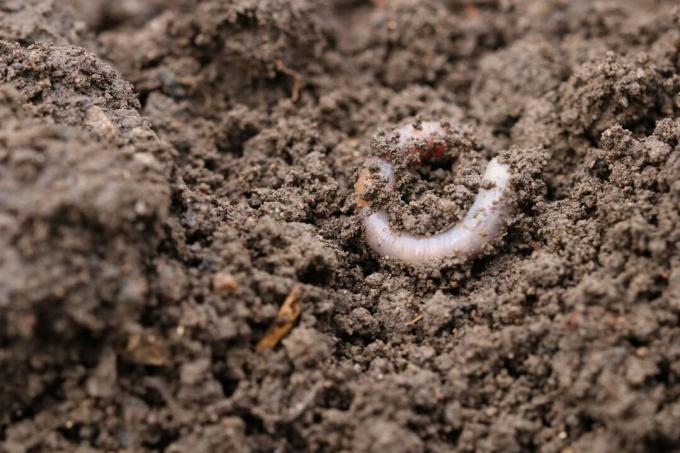
Potting soil: Mix the potting soil yourself
Potting soil has to meet special requirements. It can therefore often make sense to mix potting soil yourself. This comes with several advantages. But what do you have to pay attention to? The guide below shows how to do it.

pH value in the soil: 15 tips for measuring & regulating
If the pH of the garden/plant soil is suboptimal, this can lead to serious plant damage. We show what options there are for measuring and regulating.

